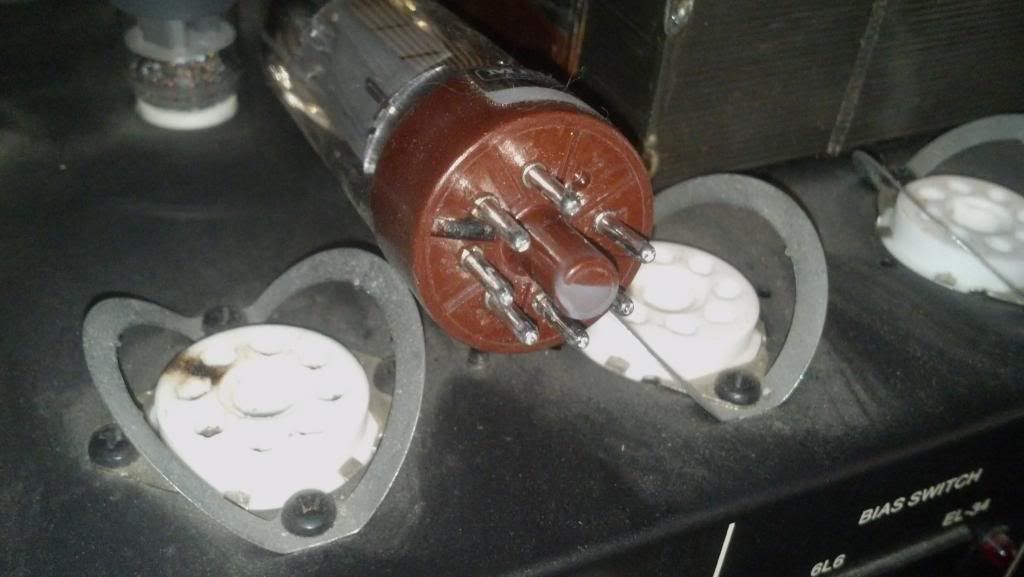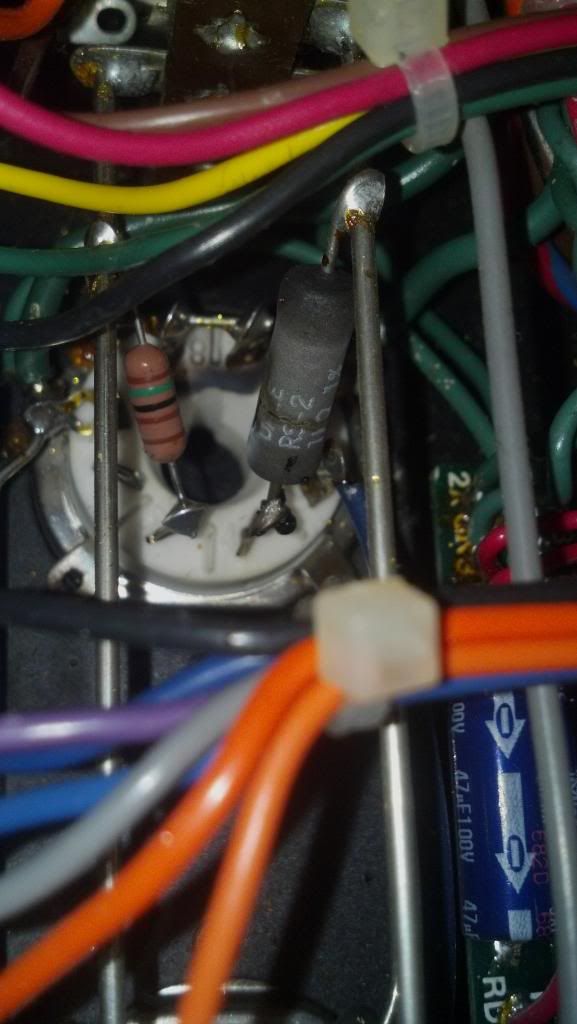Bingo! Looks like a 1K ohm precision resistor, and I'm guessing 2 watt. Whichever tube that was in that socket when the problem first occurred is likely toast (the one with the scorch mark on the base), throw that tube away. Any tubes that you've put into that socket after that are probably not damaged, they just won't work properly, but you should still clean the scorch marks and the smoky carbon dust off of all parts as it is conductive. A small soft toothbrush, some Q-tips, and some contact cleaner, or rubbing alcohol, will clean everything off. Use the contact cleaner and/or rubbing alcohol sparingly, and make sure everything is dried off well before using the amp again.
The screen grid in the tube is kind of like a regulating valve, and when it doesn't have voltage applied, the tube won't fully conduct and doesn't operate properly. The screen grid resistor limits the amount of voltage applied to the screen grid, so if the resistor is open or burnt (like yours), no voltage will be applied to the screen grid and you might notice a loss of volume. Sometimes a burnt resistor like this can be intermittent, so the volume might come and go as you've described. You might even have another screen grid resistor problem.
While you are in there replacing that bad resistor, check all other screen grid resistors closely too. IMO, when replacing output tubes, it is best to replace them in matched pairs (inner pair, or outer pair), with each pair being very closely matched to the other pair, or better yet replace them with matched quads, and then check/set the bias properly. I'm not sure if your amp has a bias adjustment pot or not (probably not), but if not, the bias can still be set by changing the value of a resistor in the bias circuit which might be necessary when using tubes other than Mesa tubes, or just use Mesa replacement tubes and theoretically the bias would be correct (I would still check it). It is quite possible that using output tubes other than Mesa tubes can cause problems with a Mesa amp. Some tubes will draw very high current, depending on the rating of the tube, and if the bias isn't adjusted, damage like you have here can occur, or worse. It's always best to get tubes that are rated properly for your amp, or adjust the bias to the tubes used.
I do not have the schematics for your amp (it's similar to a Dual Rec), but you can trace the circuit back to the bias circuit. Starting from pin 5 to what looks like a 1.5K ohm control grid resistor, (Brown-Green-Black-Brown), then next possibly a 220K ohm resistor (Red-Red-Black-Red, or Red-Red-Orange) that will connect to another resistor of the same value (going back to another 1.5K ohm resistor to another output tube), and where those two 220K ohm resistors meet the next connected resistor should be the bias resistor. (or pot if there is one).
No, I wouldn't use the amp at all until it is repaired.





